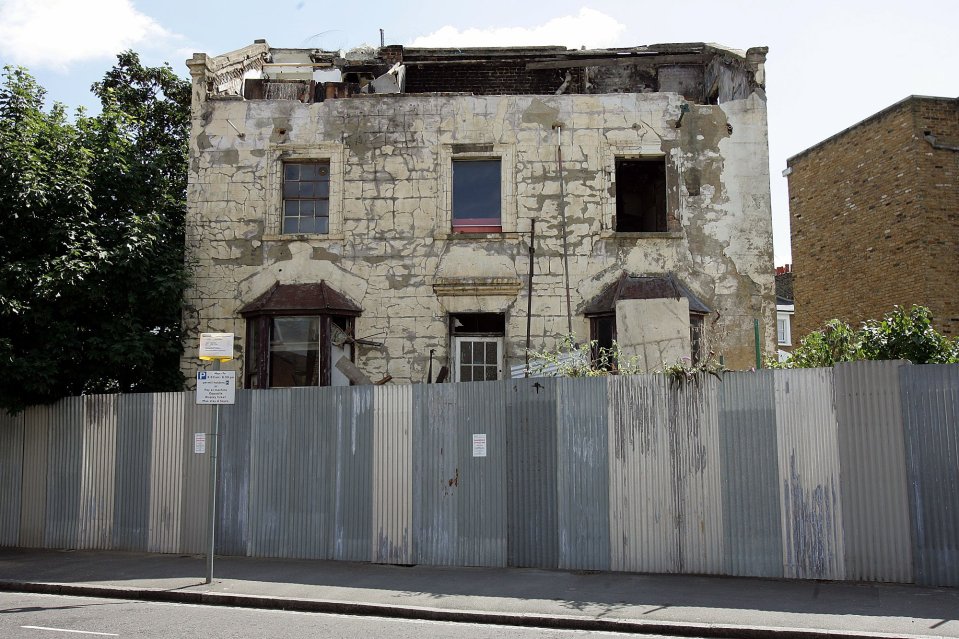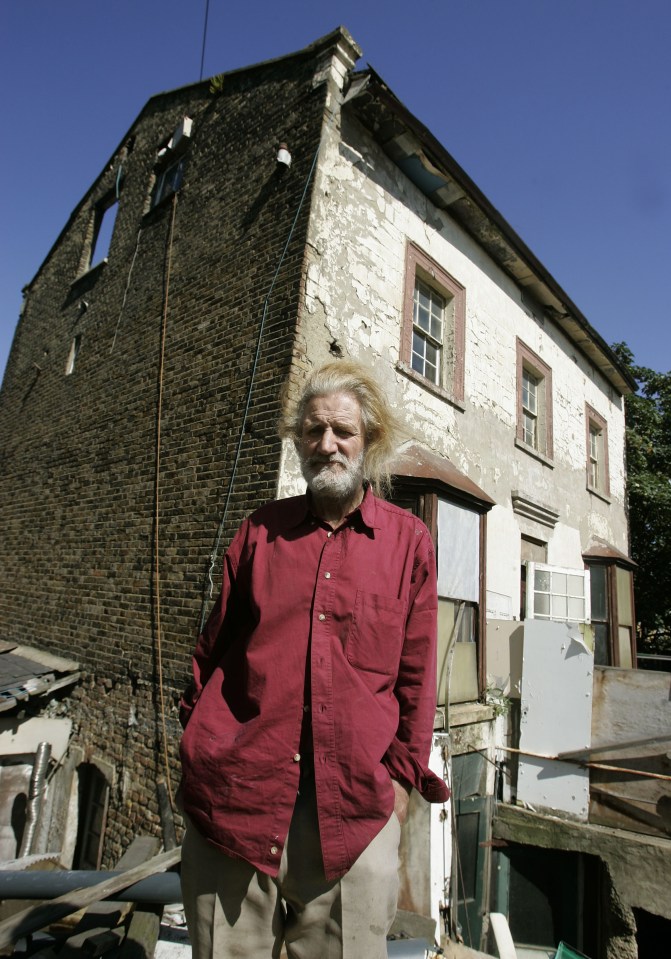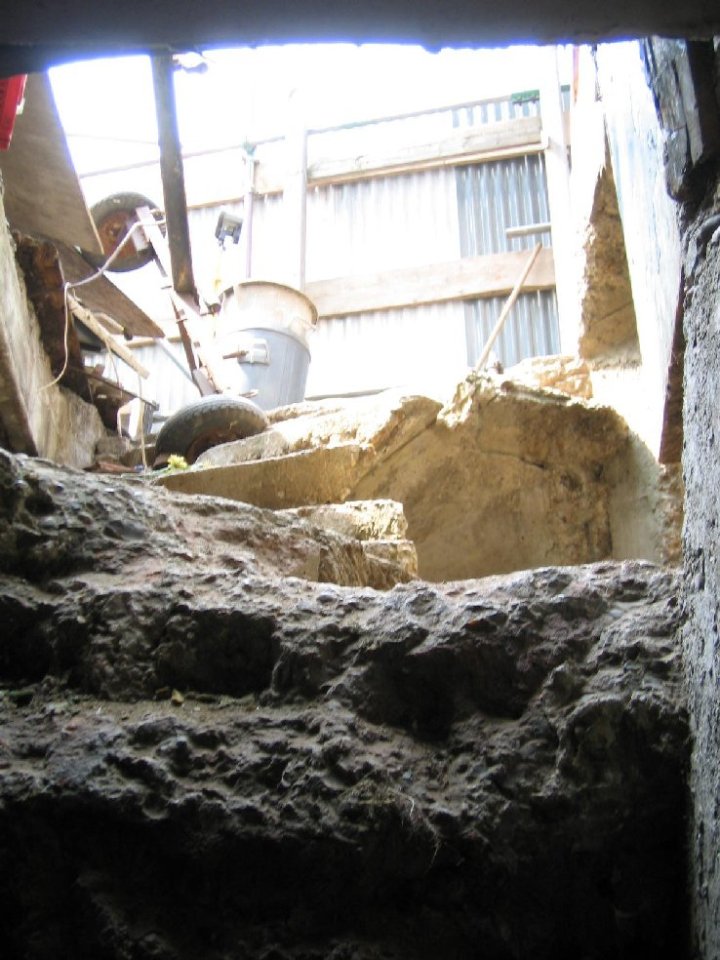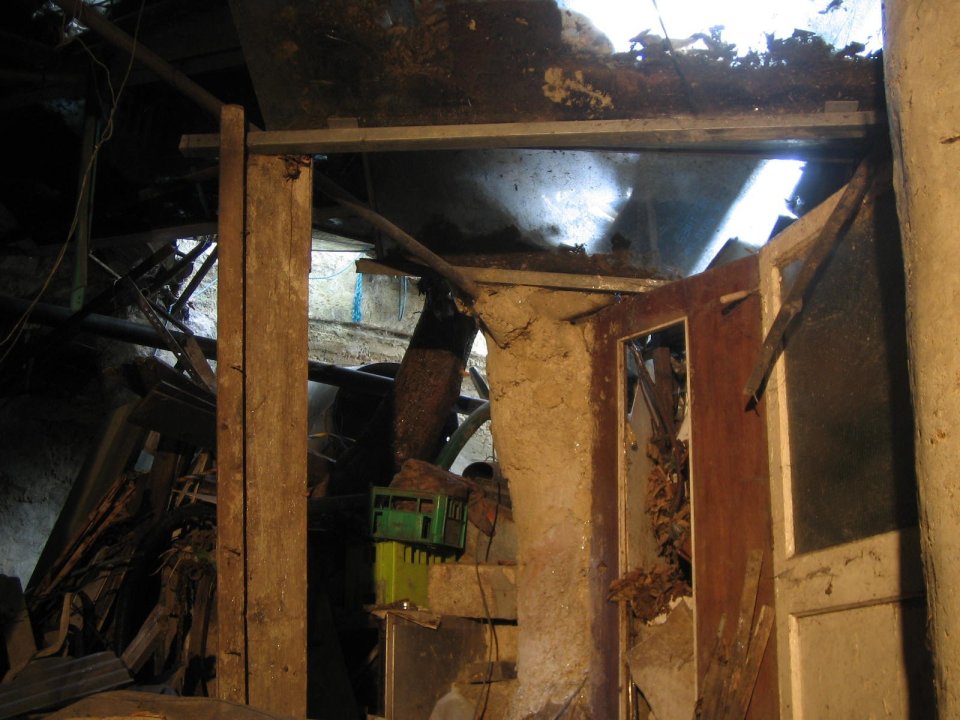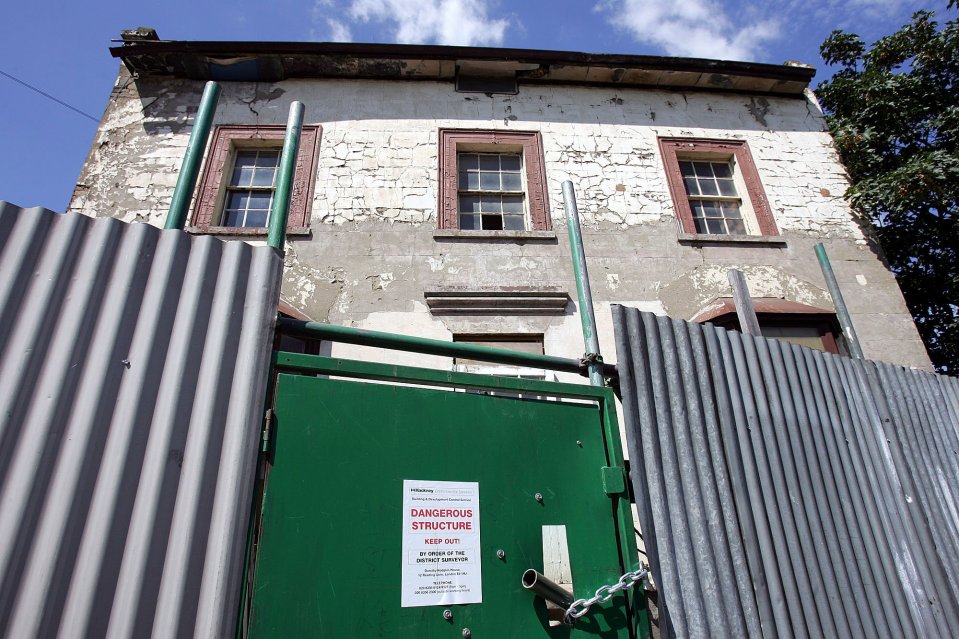TWO decades on from The Mole Man of Hackney’s eviction, his neighbours have recalled how they would wake up at 2am, terrified there was an earthquake because of his bizarre tunnelling.
William Lyttle – who claimed to be a civil engineer, although there is no record of this – was a 6’3 Irish eccentric who lived in a massive house in De Beauvoir Town in London.
He moved into the £1million Victorian property in the mid 1960s and mostly kept to himself, renting out rooms to students who would go on to become artists and authors.
At first, locals had no strong opinions on the man – until he inexplicably began digging a “network of tunnels” beneath their homes.
His unusual hobby led to a furious uproar from his neighbours, who say they would wake up in the middle of the night to their whole house shaking and a deafening “rumbling” like thunder.
What began as a project to create a wine cellar eventually led to half a century of drilling. William, who was 79 when he died, ended up creating tunnels stretching up to 65ft in every direction – as deep at 26ft in some areas.
He even dug into a 450-volt cable under his house which sparked a major power outage for the street.
MYSTERY BEHIND THE TUNNELLING
The Irishman’s massive underground maze was discovered in 2006 when a huge sinkhole opened up in the middle of the road – but he said at the time: “I just have a big basement.”
To this day, no one knows why he created the catacomb beneath Mortimer Road.
The council and his neighbours were floored to discover his 40-year addiction had created a multi-level labyrinth that even connected to the local Dalston Lane rail tunnel.
Hackney Council had received noise complaints and tip-offs in the past few years, but it wasn’t until the 8ft sinkhole’s appearance that the local authority ordered an ultrasound inspection of the area.
They also had to reroute the No 76 bus over fears the ground would give way again.
Shocked by the extent – and fearful for the collapse of more roads and houses – they evicted William and filled his tunnels with concrete.
The council housed him in a flat where he died four years later. He had also started digging away at his new home.
Council engineers removed 33 tonnes of debris from the 20-room house, including three cars and a boat from underneath the building.
I just have a big basement
William Lyttle
The High Court ordered him to pay £293,000 to the council for repairs and banned him from going near the house in 2008.
It’s now owned by contemporary artist Sue Webster, who enlisted the help of famous architect David Adjaye to renovate it.
She endeavoured to keep the outside of the historic house much the same, but completely redid the interior – even decorating some of the tunnels.
Clifford Farley resided with his mother in the early 90s and fondly remembers the “Mole Man”.
The 54-year-old said the infamous figure had “bright red hair” and would often go for strolls past his house.
“He was single, I never saw him with anyone. I never saw any family come to visit. He was very private.
“I met him in 1993. My mother and I invited him in for tea many times but he politely refused. He was very courteous, he’s not what people say about him.
“When he started digging… everyone turned on him. There would be loud rumbling in the middle of the night from his drilling – at around 1-2am.
“I’d wake up in the middle of the night thinking it was an earthquake, but he had dug out this massive network of tunnels.”
Describing the local legend, Clifford said he was “a bit aloof” and he didn’t trust people: “Something must have happened in his life to make him like this. I find it very sad.”
DIGGING FOR YEARS
He told The Sun: “He would keep metal in his garden… he had all this machinery. As a result there was a real risk of the houses collapsing though.
“He had a metal drill and went through concrete – it was all in his garden. The council found all this rusted metal. He was doing it for years, this really long network. It’s a bit frightening.
“He was so sad, but intriguing. He told me ‘my life…I can’t go on like this. People don’t understand me’. I found him puzzling and interesting but sad.
“People around here now didn’t know him and look at it differently, but back then there was a lot of anger.
“I would see him walking around three or four times a week, like it’s a habit. He was always alone.”
He said that when the local authority took over William’s house, it was fenced off with signs reading “danger” and “keep out”.
“I had a look and there was this huge hole. Someone going past told me he’s caused a lot of heartache here, they said ‘how dare he’ – that sort of thing.
“The house is so beautiful now.
“I wish I knew him better. He was hurt by what people were saying about him. I miss him.”
Ria Manen, who is 20, never met William but said she grew up hearing about him.
She lives with her parents who have been on the road for 17 years, and said: “I used to pull myself over the wall to look at the house when I was younger, I love living by it.
“I know all the stories. I don’t remember him, I was really young. We all know about the sinkhole in the road though.
It’s a great piece of history
Ria Manen
“Whenever friends come over they’re always really excited and say it’s incredible we live here. It’s a great piece of history.”
She said the house isn’t a tourist attraction, but the eye-catching exterior means people walking by do stop and stare, and sometimes take photos.
Fiona Hannafin has lived on the street for 12 years, and said she had no idea the house used to belong to William when she bought it.
The 59-year-old said: “It’s an amazing story and it’s a really interesting building.
“When we were looking for a place and we saw this, and it was relatively cheap for a house like this so we were like ‘oh wow!’
“We knew about the Mole Man and he was in this area but we didn’t flag that it was on the same road until after we moved in.
“We of course had to get it structurally assessed and there was no problem thankfully.
“When people come to visit they’re always so excited that we live on the same road. It’s something that everyone here knows about.
“It was so long ago that it’s not something that’s at the front of your mind until someone asks about it.
“I didn’t know the owner but I know a lot of famous people came through there. He rented out rooms to people in the early 80s who went on to become famous authors – I can’t think of their names. It was a bit of a crazy house back then.”
MASSIVE CRACKS IN THE ROAD
One elderly man who didn’t want to be named said he lived on the road when William was digging away.
He said “massive cracks” appeared all over the road and a huge hole appeared.
“Some people say he was a misunderstood genius but no, he was crazy. I met him lots of times. I told my kids when they were little to cross over so they don’t walk on the same side of the road as him”, he said.
Christabel Gursey has lived opposite the famous Mole House for 10 years, but didn’t know the man himself.
“At the time there was big metal fence in front of the house, it was so grotty.
“I don’t like the house as it is now, but I don’t mind living opposite it – it’s a lot better than it was!
“I just don’t like the look of it. I don’t know the new owner, I’ve only seen her once when she came out onto the pavement to clap for the NHS during Covid. I do see tour parties coming by though all the time.
“It looked grotty for ages so I’m glad it was done up. The inside must be lovely.”
Abandoned city tunnels to be turned into major £120million tourist attraction
Tunnels underneath the city of London that were built to be a WWII shelter are set to be transformed into an £120million attraction.
However, they were never used for their purpose, having been completed in 1942 after the Blitz ended.
Their biggest claim to fame was being home to spy headquarters in 1944, which is where James Bond author Ian Fleming worked.
It was said to be what inspired him to create the Q Branch.
However, it has been left abandoned since the 1970s.
And they could soon be transformed into a huge attraction open to the public called The London Tunnels.
This includes a museum space, as well as an exhibition hall and entertainment zone.
An underground bar as well as themed James Bond events could also be part of it.
The plans have been created by British architects at WilkinsonEyre, who also created both the new London Battersea Power Station and the Gardens By The Bay in Singapore.
Chief executive of The London Tunnels Mr Angus Murray said it was “very emotional” being underground, where you can feel the London tube trains running overhead.
The redevelopment of the tunnels were approved by authorities last year.
An official opening date is yet to be confirmed although it hopes to open by late 2027.



